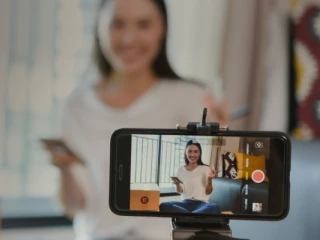Meet your audience in the middle
And then there was COVID. The pandemic has an enormous impact on B2C just as well as on B2B sales. Not only your sales staff is bound to use all the possible online means for your business, your customers are doing their homework remote as well, and social media is the perfect platform for them to meet in the middle.
Social media enables your staff to engage with leads from the moment they’re doing their research. So the sooner this interaction takes place, the stronger and more trust-worthy the relationship can grow and result more likely into sales.
Of course, it’s not that easy. Social media is a platform for anyone to share their opinion. You’re competing with organisations as well as inspiring or less inspiring thought leading people. So how do you get your message across? That’s a question we received from one of our customers last June. Can you help us make sure that our sales team spreads relevant content online – and find an easy, low-threshold way of doing that?


/Website_Landingpage_CustomerStrategyandDisruption_1920x355-(1).webp?mode=autocrop&w=320&h=240&attachmenthistoryguid=64f11915-5709-44bb-925e-9c8cf4fa489c&v=&c=171698faf2d182b98af70ce068c94669f39a8a6f20aaed1455455da4d26cbab3)
/Website_Landingpage_MarketAutomation_1920x355-(1).webp?mode=autocrop&w=320&h=240&attachmenthistoryguid=c607011b-1de3-4729-987c-0b65a3a277fb&v=&c=407368901aa461d6483d5e536d6985423e16eaaf533a43c2d65b3bdd87408165)